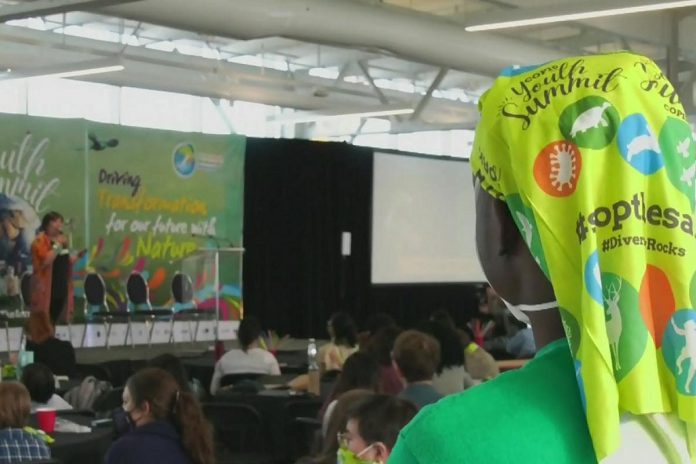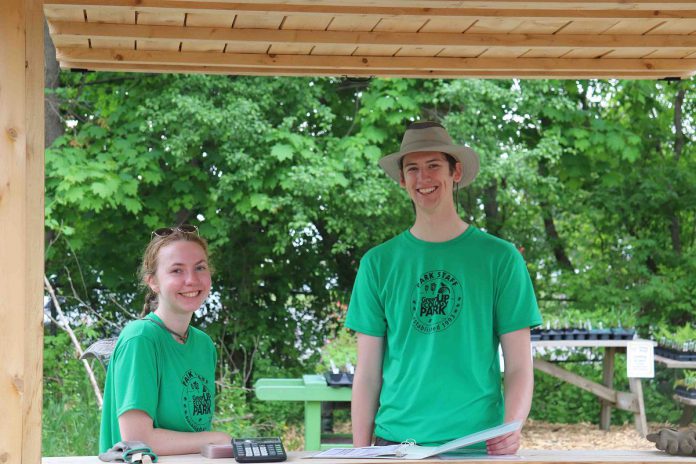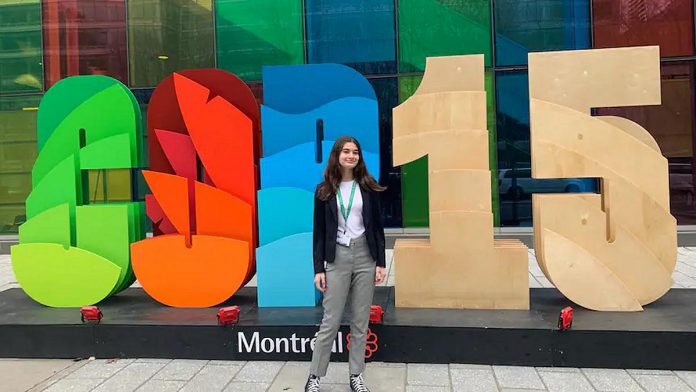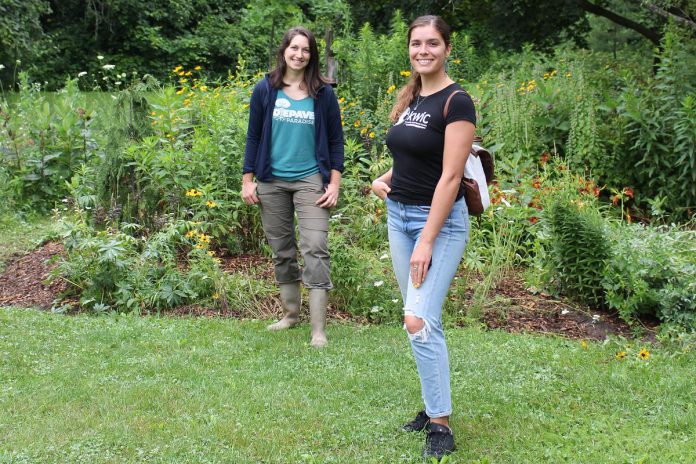
Youth action for the climate and environment has never been more important at a local and global scale.
This year was capped off with two highly anticipated events: COP27, the 27th Conference of Parties to the United Nations Framework Convention on Climate Change (UNFCCC) in Egypt and COP15, the 15th United Nations Biodiversity Conference of Parties in Montréal.
Combined, these conferences saw over 2,000 speakers and over 50,000 participants including representatives from over 150 governments. Multi-week global discussions emphasize the importance of working towards environmental action at local levels and international levels, for global issues including climate change and biodiversity loss.
There has always been something special about these COP events to me, and not only because they bring people all over the world together to talk about these issues that impact us all.
Environmental ministers, world leaders, policy makers, and internationally known activists are most likely to attend the high-level discussions. These discussions guide the outcome of international agreements which safeguard natural resources, plants and animals, and our atmosphere.
At the COP events there are ‘zones’ for public participation. The ‘Green Zone’ at COP27 and the ‘Public Zone’ at COP15 host Indigenous communities, scientists, reporters, business leaders, and educators in riveting events and discussion.

What was special to me this year was the increased presence of young people attending these globally recognized conferences, making headlines and showcasing their support for climate and environmental action.
I attended last year’s COP26 in Glasgow, Scotland. I met many other young people from around the world who are dedicated to advocating for the environment in their communities and our global community. One way youth are taking action is by participating in the discussions and events at these global forums.
During my time in Glasgow in 2021, I met Danish youth from Copenhagen who entered the climate delegations to discuss rising carbon dioxide emissions. I also met youth from Brazil who attended COP27 as members of ‘Global Shapers’, a group of almost 10,000 young people creating dialogue, action, and change. I even met a 20-year-old Scottish storyteller who wove climate sciences into culturally relevant stories.
A year later, I am grateful to see more young people representing the causes that matter to us at COP15 and COP27.
Severn Cullis-Suzuki, the daughter of David Suzuki, was 12 when she spoke for climate action at one of the first Nature COPs. This year, 30 years after that original appearance, she is working to amplify the voices of youth.
During the COP15 Youth Summit, Cullis-Suzuki sat in conversation with Ta’Kaiya Blaneya. Blaneya is a 13-year-old singer-songwriter from Tla’Amin First Nation who speaks to lost natural spaces and the impact of people on climate change and the environment. Elevating youth voices like Blaneya’s is something I hope to see more of in the environmental movement.

Youth from organizations like Care about Climate also attended COP15 panels and meetings with policy leaders. They weighed in on the importance of these negotiations for children and youth around the world. The youth of Care about Climate specifically asked governments to set aside 30 percent of land and water globally to be protected by 2030.
Josefa Cariño Tauli, a young Ibaloi-Kankanaey Igorot indigenous leader from the Philippines, delivered a statement to the High-Level Segment of Nature COP15 in 2021. Tauli stated that she was “inspired by many youth, who despite the fear and the frustration and the many challenges, find it in ourselves to hope, to act, to persist.”
The world persists. When the COP15 discussions ended on December 19th, a historic landmark agreement was made to guide nations to protect nature until 2030 — including putting 30 per cent of the planet and 30 per cent of degraded ecosystems under protection by 2030.
Youth are now more able than ever before to voice their knowledge and desire to act. They are also now more likely to be recognized in the formation of policy.
At COP27, youth constituents of the United Nations Framework Convention on Climate Change (UNFCCC) were recognized as official stakeholders in designing and implementing climate policies.
The #youthpower of @COP27P!! After 20+ hours of negotiations and 10+ hours of bilateral discussions, my team @IYCM secured official recognition of youth as stakeholders in “designing and implementing climate policies” in the ACE Action Plan (Article 12 of the Paris Agreement)!! pic.twitter.com/Cxky3DkEax
— Hailey Campbell (@HaileyPCampbell) November 12, 2022
COP27 also concluded with a historic climate deal being sealed.
The agreement, fuelled by financial pledges made from countries such as Austria, Canada, New Zealand, Denmark and Scotland, created the Loss and Damage Fund, a fund for the loss and damage that developing countries face as a result of climate change.

These events gave me hope that a zero-carbon-emission lifestyle and protection of our critical species is possible. It will be made possible by including youth in discussions and events on a local and global scale.
Youth empowerment in the climate and environmental movement is happening here in Peterborough/Nogojiwanong. I feel inspired to be a part of it.
Youth like Shaelyn Wabegijig, a local 24-year-old Algonquin youth who grew up in Mnjikaning/Rama First Nation, are taking leadership roles like sitting on the GreenUP’s board of directors and working for the Kawartha World Issues Centre. Shaelyn demonstrates how young people can advance United Nations Sustainable Development Goals locally through events and engagement opportunities.
Local youth ages nine to 14 are also working to spread awareness of the climate crisis, through volunteering with groups like the Youth Climate Action Club of Peterborough/Nogojiwanong.
Including young people in community efforts builds leadership capability, connections across generations, and inspires meaningful change. Making space for youth participation in environmental action gives agency to young people to better understand, and work directly on issues that can improve their future.
As a settler living and working in Peterborough/Nogojiwanong in 2023, I am proud to be a part of the GreenUP community amidst positive environmental progress. A community that has youth at the forefront, that is leading local change, and is working toward the global change we so dearly need.


























